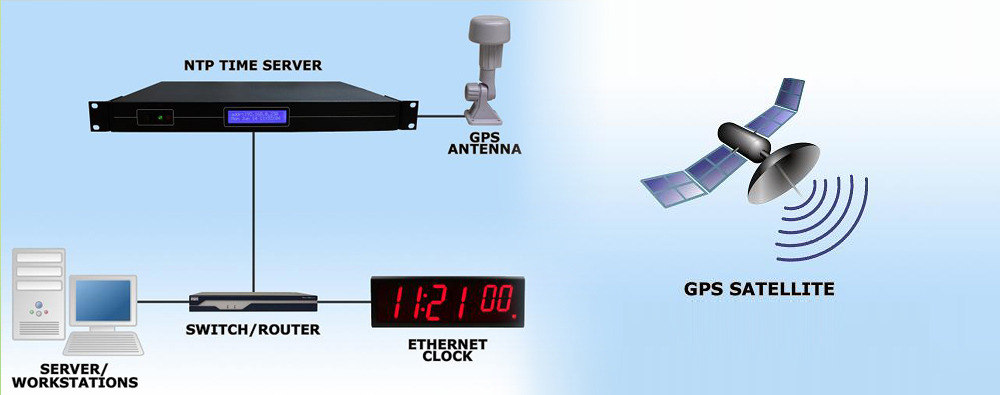Network Time Protocol or NTP plays a crucial role in keeping network devices synchronized to a standard time source across the internet. NTP servers ensure that all computers and other network devices maintain accurate universal time convention (UTC) or standard time. This article delves deeper into understanding what are NTP servers, their key functions, types of NTP servers and the market outlook for the NTP server market.
What is an NTP Server?
A network time protocol (NTP) server is a time server that uses NTP to synchronize the system clocks of computers and other networked devices on a local area network (LAN) or wide area network (WAN). NTP Server is a networking protocol for clock synchronization between computer systems over packet-switched, variable-latency data networks. It is designed to synchronize system clocks within milliseconds of Coordinated Universal Time (UTC).
NTP synchronizes clocks by transmitting timestamped messages between NTP-enabled servers and clients. The most accurate time source will typically be designated the primary reference clock or primary server, while other NTP servers will act as secondary reference clocks that synchronize to the primary. As networked devices synchronize with NTP servers, the discrepancy between system clocks is reduced, improving accuracy across the network.
Importance for Device Time Synchronization
Accurate timekeeping across networked devices is crucial for various infrastructure, security, and collaboration purposes:
– Authentication & Authorization: Many security measures rely on timestamps to verify user access privileges and detect unauthorized access attempts. Clock drift could enable unauthorized access by invalidating timestamps.
– Log Timestamps: Correct timestamps on logs and audit trails are important for security monitoring, incident response, and forensic investigations. Clock synchronization ensures all events have consistent, verifiable timestamps.
– Session Management: Applications need synchronized clocks to properly manage user sessions, sign-outs, token expiration, and other timed elements. Drift can cause unexpected behaviors.
– Database Replication: Databases rely on precise timestamps to coordinate data replication across servers. Significant clock skew can lead to errors or lost/ duplicate records.
– Workflow Automation: Scheduled backups, patches, and other automated tasks require accurate system clocks to run on schedule. Drift disrupts planned maintenance and risk windows.
– Internet Communications: Protocols like SMTP and NTP itself rely on synchronized time for message routing, DNS lookups, and streamlined communications between servers and clients.
Implementing an NTP Server
There are a few basic ways to implement an NTP Server and keep networked devices synchronized:
Physical Hardware Server
For large networks, a dedicated physical NTP server appliance provides reliable timekeeping. These specialized servers connect directly to an external time source like GPS and synchronize over 100 clients with sub-millisecond accuracy. Management features help configure stratum levels, access control, and failover/ redundancy.
Virtual NTP Server
For smaller networks, virtual NTP servers can run on existing server hardware or in virtual machines. They act as secondary/secondary NTP servers that synchronize to an upstream primary server or Internet time source. Virtual servers offer lower costs than hardware but depend on the host environment for high availability.
NTP Pool Project
Free public NTP server pools like pool.ntp.org provide a selection of geographically distributed stratum 1-3 time servers. Devices configure one or more of these servers as an upgradeable reference clock. While easy to implement, Internet latency and lack of control compromises accuracy compared to local dedicated servers.
Windows/LinuxBuilt-in NTP
Most modern operating systems include basic NTP client/server software that can synchronize a small number of machines when configured as the primary NTP source. However, they lack robust features for reliability, redundancy, and managing larger deployments compared to dedicated appliances/servers.
Accurate time synchronization across networked infrastructure is crucial for dependability, functionality, and security in today’s digital environments. Dedicated NTP servers provide traceable timestamps and coordinated system clocks to keep business operations, applications, and services running smoothly. Proper implementation and failover planning ensures productivity relies on precise, verifiable time even in the event primary references become unavailable. Reliable clock synchronization through NTP servers remains an essential building block for modern networked systems. With increased technology adoption across industries globally, the NTP server market is well-positioned for continued growth and innovation to accommodate future bandwidth and latency demands of next-gen technologies over the coming years.
*Note:
1. Source: Coherent Market Insights, Public sources, Desk research
2. We have leveraged AI tools to mine information and compile it



